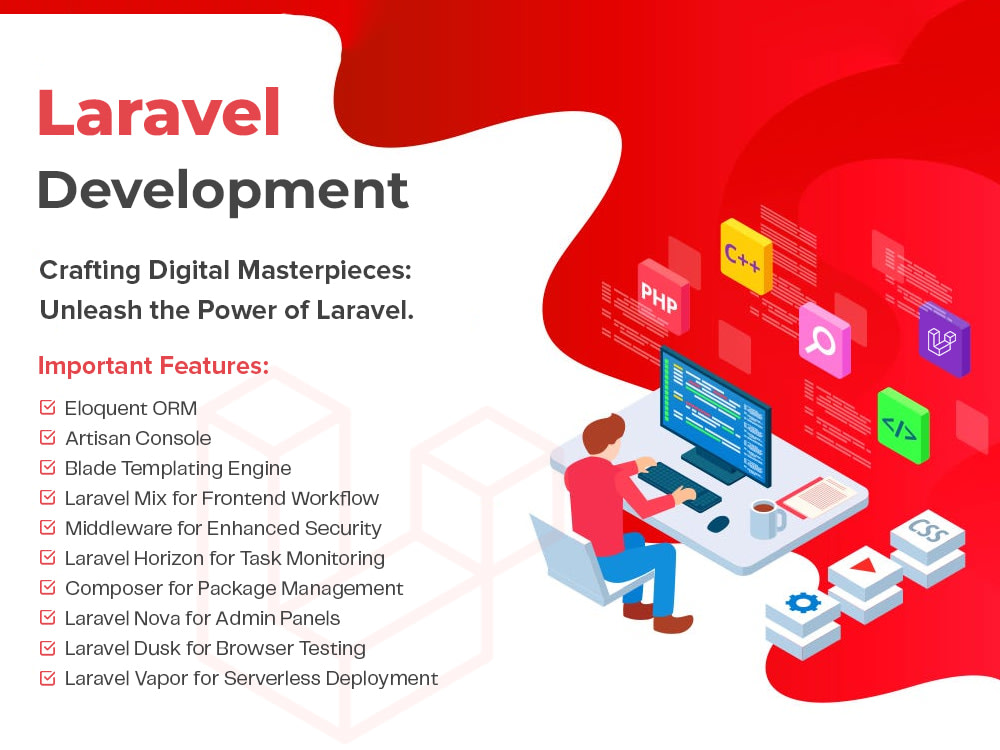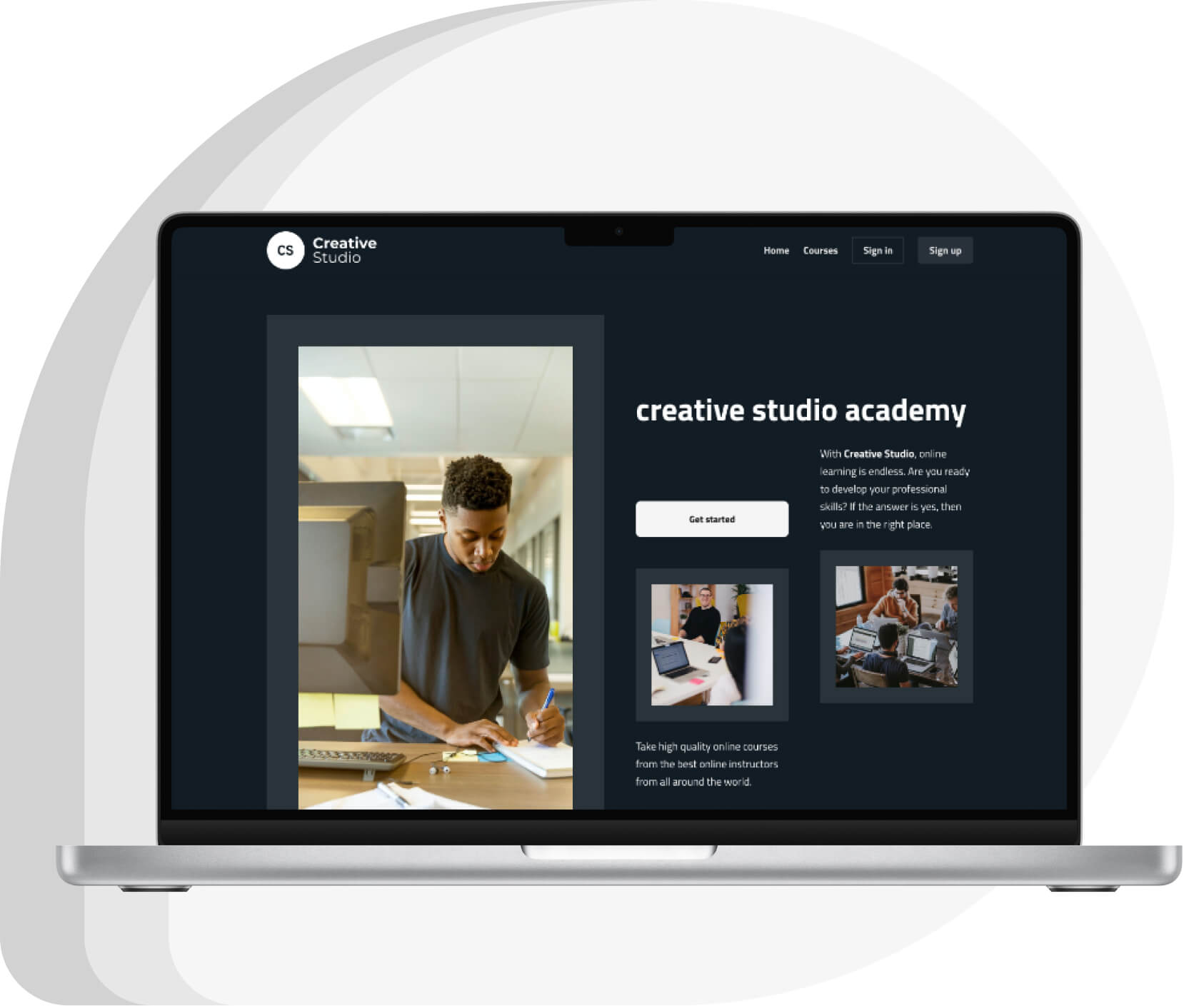Custom web application development refers to the process of creating tailor-made web applications that meet the specific needs and requirements of a business or organization, including design, features, and functionality. It involves the use of programming languages and frameworks to develop a unique and personalized web application according to client specifications.
Custom web applications offer flexibility, scalability, and enhanced user experience, making them an ideal choice for businesses seeking a competitive edge in the online marketplace. With custom web application development, businesses can streamline their operations, automate processes, and deliver a seamless and interactive user experience to their customers.
The Importance Of Custom Web Application Development
Custom web application development plays a pivotal role in the success of modern businesses. Embracing the tailored approach offered by custom web applications is essential in meeting specific business needs and enhancing the overall user experience.
Meeting Specific Business Needs
Custom web application development enables businesses to tailor their online presence according to their specific requirements. Whether it’s streamlining internal processes, integrating third-party systems, or creating unique functionalities, custom web applications ensure that business operations are <strong>catered to precisely. This level of customization provides a significant edge in today’s competitive market landscape.
Enhancing User Experience
User experience is paramount in the digital realm. Custom web applications are meticulously designed to ensure seamless and intuitive interactions for users. By prioritizing usability and performance, businesses can cultivate a loyal user base and drive engagement. Custom web applications enable companies to offer a tailored experience that resonates with their target audience, ultimately leading to impactful business outcomes.

Credit: stdiohue.com
Key Benefits Of Custom Web Application Development
Get the most out of your online presence with custom web application development. With tailored solutions, you can enjoy increased efficiency, enhanced functionality, and improved user experience on your website. Stand out from the competition and achieve your business goals with a personalized web application.
Scalability And Flexibility</h3>
One key benefit of custom w
eb application development is the ability to scale and adapt the application as your business grows and changes. Off-the-shelf solutions may not have the flexibility to accommodate future needs, but with a custom web application, you can easily add new features and functionalities as required.
Furthermore, a custom web application can be tailored to fit your specific business processes and workflows, ensuring maximum efficiency and ease of use.
Improved Efficiency And Productivity
A custom web application can greatly improve the efficiency and productivity of your business. By automating repetitive tasks and streamlining workflows, you can save valuable time and resources.
With a custom web application, you can eliminate manual data entry and reduce human errors, leading to increased accuracy and improved overall productivity. Additionally, the application can provide real-time analytics and reporting, enabling you to make data-driven decisions and optimize your operations.
Data Security
Data security is a major concern for businesses today, and a custom web application can provide the necessary level of protection. With a custom solution, you have control over the security measures implemented, ensuring that sensitive data is securely stored and transmitted.
By incorporating authentication and authorization systems, encrypted connections, and regular security updates, a custom web application can mitigate the risks of data breaches and unauthorized access.
Integration With Existing Systems
A custom web application can seamlessly integrate with your existing systems and software. Whether you use customer relationship management (CRM) tools, enterprise resource planning (ERP) software, or any other applications, a custom web application can be developed to connect and interact with these systems.
This integration eliminates the need for manual data entry and allows for real-time data synchronization, ensuring data consistency and reducing duplication.
Competitive Advantage
Custom web application development can provide your business with a competitive advantage in the digital landscape. By having a unique application tailored specifically to meet your business needs, you can differentiate yourself from your competitors.
A custom web application can help you enhance customer experience, improve operational efficiency, and offer innovative features that set you apart in the market. This advantage can contribute to increased customer satisfaction, business growth, and ultimately, higher profitability.
Components Of Successful Custom Web Application Development
Custom web application development is a highly specialized process that requires careful planning and execution. To ensure the success of a web application, several key components need to be considered. These components include thorough requirement analysis, user-centric design, robust backend development, effective testing and quality assurance, and post-development support and maintenance. In this blog post, we will explore each of these components and discuss their importance in creating a successful custom web application.
Thorough Requirement Analysis
Before starting the development process, a thorough requirement analysis is crucial. This step involves understanding the client’s needs, gathering all the necessary information, and setting clear objectives for the web application. By conducting a detailed requirement analysis, the development team can create a roadmap and ensure that the end product meets the client’s expectations.
<h3>User-centric Design
Creating a user-centric design is paramount in developing a successful web application. The design should be intuitive, visually appealing, and easy to navigate. By understanding the target audience and their preferences, the development team can create an engaging user interface that enhances the overall user experience. A user-centric design ensures that users can easily access the information they need, leading to increased user satisfaction and retention.
Robust Backend Development
The backend development of a web application is responsible for managing data, performing complex calculations, and ensuring the application’s functionality. It involves building a solid foundation, including a well-structured database, efficient APIs, and scalable architecture. A robust backend development ensures that the web application performs optimally, handles high volumes of traffic, and provides a seamless experience to users.
Effective Testing And Quality Assurance
Testing and quality assurance are essential components of custom web application development. Rigorous testing helps identify and resolve any bugs or issues, ensuring that the web application is functioning correctly.
It includes various types of testing such as functional testing, usability testing, performance testing, and security testing. Through effective testing and quality assurance, the development team can deliver a reliable and error-free web application to the client.
Post-development Support And Maintenance
Post-development support and maintenance are crucial for the long-term success of a custom web application. It involves continuously monitoring the application, resolving any issues, and providing timely updates and enhancements. By offering ongoing support and maintenance, the development team ensures that the web application remains secure, up-to-date, and meets evolving user requirements.
In conclusion, successful custom web application development consists of several key components. Thorough requirement analysis, user-centric design, robust backend development, effective testing and quality assurance, and post-development support and maintenance are all integral to creating a web application that meets the client’s needs and exceeds user expectations.

Credit: www.upwork.com
Technologies And Frameworks For Custom Web Application Development
When it comes to custom web application development, the choice of technologies and frameworks plays a vital role in shaping the functionality, performance, and user experience of the final product. By utilizing the right technologies and frameworks, businesses can create powerful and scalable web applications tailored to their specific needs. In this article, we will explore the key technologies and frameworks commonly used in custom web application development to help you make informed decisions for your next project.
Frontend Technologies
Frontend development involves crafting the user interface and ensuring seamless interaction. Here are some essential frontend technologies:
- HTML (Hypertext Markup Language) – The basic building block of web pages, providing the structure and content of the application.
- CSS (Cascading Style Sheets) – Responsible for the visual presentation of the web application, including layout, colors, and fonts.
- <strong>JavaScript – Enables interactive elements, dynamic content, and enhanced user experience through various libraries and frameworks such as React, Vue, or Angular.
Backend Technologies
Backend development focuses on server-side operations, database management, and business logic implementation. Here are some crucial backend technologies:
- Node.js – A popular runtime environment for executing JavaScript code on the server, enabling efficient event-driven and non-blocking I/O operations.
- Python – Known for its simplicity and readability, Python is often used for backend development and data analysis.
- Java – Renowned for its performance, scalability, and platform independence, Java is a versatile choice for building robust web applications.
Frameworks And Libraries
Frameworks and libraries provide developers with pre-built components and tools to expedite the development process and maintain code quality. Here are some widely utilized frameworks and libraries:
- React.js – A JavaScript library for building user interfaces, offering a component-based architecture and efficient state management.
- Express.js – A fast, minimalist web framework for Node.js, simplifying the creation of APIs and handling HTTP requests.
- Django – A high-level Python web framework that promotes rapid development and clean, pragmatic design.
Best Practices For Custom Web Application Development
When it comes to custom web application development, adhering to best practices can make a significant impact on the success of your project. Following these guidelines ensures that your web application is developed efficiently, with a clear goal, an agile approach, responsive design, code reusability, and regular communication and feedback. Let’s delve into each of these best practices to understand their importance and how they contribute to the development process.
Clear Goal and Objective
Having a clear goal and objective is crucial for the successful development of a custom web application. It is essential to define what you want to achieve with your web application and create a detailed plan to reach those targets.
Key Points:
- Identify the purpose of the web application and the problems it will solve.
- Set specific and measurable goals that align with your business objectives.
- Create a detailed project plan, outlining the features and functionality required.
- Communicate the goals and objectives to the development team.
Agile Development Approach
An agile development approach allows for flexibility, adaptability, and collaboration throughout the web application development process. It focuses on iterative development, continuous improvement, and delivering value to the end-users.
Key Points:
- Break down the development process into smaller, manageable tasks.
- Regularly review and prioritize tasks based on client requirements.
- Implement an iterative development cycle to gather feedback and make necessary changes.
- Encourage collaboration and communication within the development team.
Responsive Design
A responsive design ensures that your web application is accessible and user-friendly across different devices and screen sizes. It enhances the user experience, improves engagement, and boosts conversion rates.
Key Points:
- Design the web application with a responsive layout, using CSS media queries.
- Optimize images and content to fit different screen resolutions.
- Test the web application on various devices and browsers to ensure consistent performance.
Code Reusability
Code reusability plays a vital role in custom web application development, as it saves time, effort, and cost. By creating reusable code modules or libraries, you can streamline the development process and maintain consistent quality.
Key Points:
- Identify common functionalities and create reusable code modules.
- Implement coding standards and guidelines for consistent code structure.
- Regularly review and refactor code to improve maintainability and scalability.
Regular Communication and Feedback
Regular communication and feedback are essential to ensure transparency, alignment, and a successful outcome. By establishing an open line of communication, you can address issues promptly, gather feedback, and make necessary changes as the project progresses.
Key Points:
- Schedule regular meetings to discuss project progress, challenges, and updates.
- Encourage clients to provide feedback at every stage of the development process.
- Communicate any changes or updates promptly to the development team.
- Implement an issue-tracking system to address and resolve any reported issues.
Challenges In Custom Web Application Development
Steps To Successful Custom Web Application Development
Custom web application development involves a systematic process to ensure the creation of high-quality, tailored solutions that meet the unique needs of businesses and users. By following key steps throughout the development lifecycle, developers can efficiently build custom web applications that are functional, user-friendly, and scalable. The following are the essential steps to successful custom web application development:
Gather Requirements And Define Goals
Gathering requirements and defining goals is the foundational step of custom web application development. It involves thorough discussions and analysis to understand the client’s needs, objectives, and expectations. This phase ensures the development team has a clear understanding of what the end product should achieve.
Create Wireframes And Design Mockups
After establishing requirements, the next step is to create wireframes and design mockups. <strong>This involves sketching the layout, user interface elements, and overall visual aesthetics of the web application. It helps in visualizing the structure and flow of the application before proceeding to actual development.
Backend Development And Database Integration
Backend development and database integration are pivotal for custom web applications. This phase involves creating the server-side logic, and databases, and ensuring seamless data flow. It is essential for handling business logic, user authentication, and data management.
Frontend Development And Ui Implementation
Frontend development and UI implementation bring the visual elements to life. This step focuses on building the user-facing interface, incorporating design mockups, and ensuring a smooth and intuitive user experience. It involves coding with HTML, CSS, and JavaScript to create responsive and interactive interfaces.
Testing, Quality Assurance, And Deployment
Testing, quality assurance, and deployment are critical for delivering a robust custom web application. This phase involves meticulous testing to identify and rectify any bugs, ensuring the application functions flawlessly. Once passed through rigorous testing, the final step is to deploy the application in a production environment.
Selecting The Right Custom Web Application Development Company
When it comes to developing a custom web application, selecting the right web development company can make all the difference. A skilled and experienced development team will not only understand your business requirements but also deliver a scalable and robust web application that meets your specific needs.
Experience And Expertise
The first thing you should consider when selecting a custom web application development company is their experience and expertise. Look for a company that has a proven track record in developing web applications similar to what you have in mind. An experienced company will have a deep understanding of the latest technologies and frameworks, allowing them to develop a high-quality web application that is both functional and user-friendly.
Client References And Portfolio
Checking client references and the portfolio of a web development company is an essential step in the selection process. Look for testimonials or case studies from satisfied clients to get an idea of the company’s past work. Additionally, review their portfolio to see if they have previously developed web applications that align with your industry or business niche. This will give you confidence in their ability to deliver a successful solution.
Effective Communication
Communication is key when working with a web development company. You need to be able to effectively communicate your vision and requirements for the web application, as well as receive regular updates on the progress of the project. Look for a company that values clear and open communication, providing you with a dedicated project manager or point of contact who will keep you informed every step of the way.
Project Management Approach
A well-defined project management approach is crucial for the success of your custom web application development project. Look for a company that follows a structured project management methodology, such as Agile or Scrum. This ensures that the development process is organized, with clear timelines and milestones. A transparent project management approach allows you to track progress and make necessary adjustments along the way.
Pricing And Timelines
Pricing and timelines are significant factors to consider when selecting a web development company. Discuss the budget and timeline for your project upfront to ensure they align with your expectations. A reputable company will provide you with a detailed proposal that outlines the cost breakdown and estimated timeline for each phase of the development process. Keep in mind that while cost is important, focusing solely on price may compromise the quality of the end product.
Case Studies: Successful Custom Web Application Development Projects
Our case studies showcase the success of our custom web application development projects. Discover how our team delivers tailored solutions that meet the unique needs of businesses.
In this section, we will explore three case studies of successful custom web application development projects. These projects involved creating tailored solutions for specific business needs, resulting in increased efficiency, improved customer satisfaction, and measurable growth for the respective companies.
E-commerce Platform For Company Xyz
Company XYZ, a leading retailer in the fashion industry, needed a robust e-commerce platform to enhance its online presence and drive sales. Our team collaborated closely with Company XYZ to understand their unique requirements and created a tailor-made solution that catered to their specific business needs.
The custom web application we developed for Company XYZ included advanced features such as a user-friendly interface, seamless navigation, secure payment gateways, and personalized shopping experiences. By implementing an effective search algorithm and integrating inventory management systems, we ensured that customers could easily find the products they were looking for and that Company XYZ could efficiently manage their stock levels.
As a result of our custom web application development, Company XYZ reported a significant increase in online sales, an improved conversion rate, and enhanced customer satisfaction. The scalable architecture we implemented also allowed for future growth and expansion, positioning Company XYZ as a frontrunner in the competitive e-commerce industry.
Crm Solution For Company Abc
Company ABC, a multinational corporation, required a robust Customer Relationship Management (CRM) solution to streamline its sales processes and enhance customer interactions. Our team collaborated closely with key stakeholders at Company ABC to understand their pain points and develop a custom CRM solution to address their specific needs.
The custom web application we created for Company ABC included features such as lead management, contact tracking, sales pipeline monitoring, and integrated communication tools. By automating various tasks and centralizing customer data, our solution enabled Company ABC to streamline its sales processes, improve team collaboration, and provide a personalized customer experience.
After implementing our custom CRM solution, Company ABC noticed increased efficiency in their sales processes, improved customer satisfaction, and a boost in sales revenue. The customizable nature of our CRM solution also allowed Company ABC to evolve its system as its business needs changed, ensuring ongoing success.
Online Learning Management System For University Qrs
University QRS, renowned for its online education programs, requires a robust Learning Management System (LMS) to deliver engaging and interactive online courses to its students. Our team collaborated closely with the faculty and administrators at University QRS to develop a customized LMS to meet their specific requirements.
The custom web application we developed for University QRS included features such as user-friendly course creation tools, secure content delivery, discussion forums, and progress tracking. By integrating multimedia capabilities and interactive assessments, we created an engaging learning environment for students.
As a result of our custom web application development, University QRS witnessed enhanced student engagement, and improved course completion rates. And an overall better learning experience. The flexibility of our LMS allowed University QRS to easily scale its online education programs, expanding its reach to a larger student base.
Future Trends In Custom Web Application Development
The future of custom web application development holds exciting prospects, with new technologies shaping the way applications are built and utilized. As businesses strive to stay ahead in the digital landscape, it’s crucial to stay abreast of the latest trends in custom web application development to maintain a competitive edge. This article explores the future trends that are reshaping the custom web application development landscape.
Advancements In Artificial Intelligence
Artificial Intelligence (AI) is becoming increasingly prevalent in web application development, enabling enhanced user experiences through machine learning algorithms and predictive analytics. AI-powered chatbots and personalized recommendations are revolutionizing customer interactions and driving user engagement.
Progressive Web Apps (pwas)
Progressive Web Apps (PWAs) are gaining momentum for their ability to offer a seamless, app-like experience on the web. With features such as offline capabilities and push notifications, PWAs are redefining the user experience, particularly in mobile contexts.
Internet Of Things (iot) Integration
Integration with the Internet of Things (IoT) is opening up new possibilities for web applications. The ability to connect and control smart devices through web interfaces is leading to innovative applications in home automation and industrial settings.
Voice-enabled Interfaces
Voice-enabled interfaces are reshaping the way users interact with web applications. With the widespread adoption of virtual assistants and voice search, integrating voice capabilities into. Web applications is becoming a pivotal trend for enhancing accessibility and user convenience.
Blockchain Implementation
Blockchain technology is revolutionizing the security and transparency of web applications. Its implementation in custom web development is enabling secure transactions and data integrity, particularly in industries such as finance, healthcare, and supply chain management.
Frequently Asked Questions Of Custom Web Application Development
What Is Custom Web Application Development?
Custom web application development refers to the process of creating tailor-made web applications that are designed specifically to meet the unique needs and requirements of a business or organization.
Why Is Custom Web Application Development Important?
Custom web application development is important because it allows businesses to have complete control over the functionality. And features of their web applications, ensuring that they can meet their specific business goals and objectives.
How Does Custom Web Application Development Benefit Businesses?
Custom web application development benefits businesses by improving efficiency, streamlining processes, and enhancing user experience. And providing unique functionalities that are tailored to their specific needs.
What Are The Key Steps Involved In Custom Web Application Development?
The key steps involved in custom web application development include requirement gathering, design and prototyping, and development. And coding, testing, deployment, and ongoing maintenance and support.
Is Custom Web Application Development Suitable For Small Businesses?
Yes, custom web application development can be suitable for small businesses as it allows them to have a tailored solution that caters to their unique needs, helping them stand out in the competitive market.
How Can Custom Web Application Development Enhance Website Security?
Custom web application development enhances website security by enabling the implementation of robust security measures such as secure authentication, data encryption, access controls, and regular security audits.
What Technologies Are Needed For Custom Web Application Development?
The technologies needed for custom web application development depend on the specific requirements of the project. But commonly used technologies include HTML, CSS, JavaScript, PHP, Python, Ruby, and various frameworks and libraries.
How Long Does Custom Web Application Development Take?
The time it takes for custom web application development depends on the complexity of the project and the specific requirements. It can range from a few weeks to several months.
Can An Existing Web Application Be Converted Into A Custom Web Application?
Yes, an existing web application can be converted into a custom web application by redeveloping or redesigning it to meet the unique needs and requirements of the business or organization.
What Are The Cost Considerations For Custom Web Application Development?
The cost considerations for custom web application development include the complexity of the project, the number of features. And functionalities required the technology stack, and the ongoing maintenance and support costs.
Conclusion
To conclude, custom web application development is crucial for businesses seeking unique solutions. It offers flexibility, scalability, and personalized features to meet specific needs. With the right development team, businesses can achieve a competitive edge and improved customer satisfaction. Let’s collaborate to create a customized web application for your business today.






